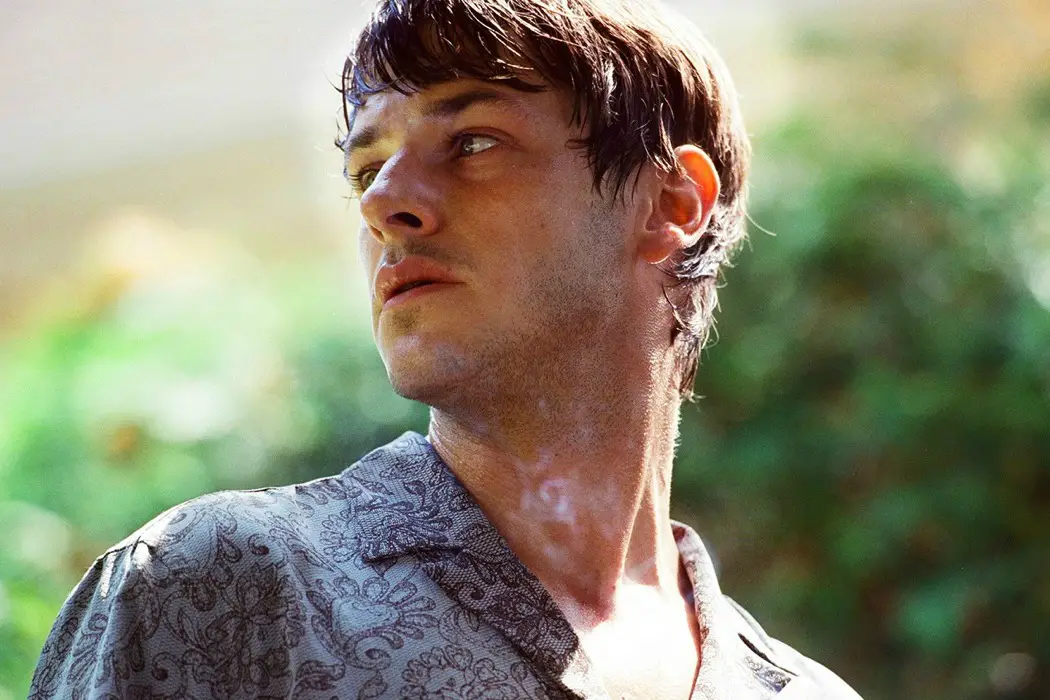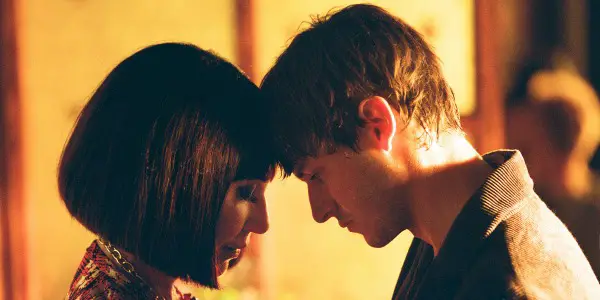IT’S ONLY THE END OF THE WORLD: Xavier Dolan’s First Misfire

Alistair is a 25 year old writer based in Cambridge.…
French-Canadian director Xavier Dolan has claimed that his latest film marks a new step in his career, to make his most mature film to date. Six films into his career and still only in his twenties, an alleged artistic growth at such a young age is unheard of. The problem with It’s Only the End of the World, Dolan’s first film set outside of Canada, is that he appears to have mistaken straight-faced seriousness for maturity, ignoring the fact his previous films were emotionally rich and unshakably human despite their melodramatic tone and their highly stylized visual quirks.
An Uneasy Blend of Melodrama and Maturity
This is Xavier Dolan’s second effort to adapt from a stage play, following his fourth feature, 2013’s Tom at the Farm – and by sheer coincidence, both his stage adaptations act as companion pieces, sharing narratives that aren’t too dissimilar. In Tom at the Farm, the lead character embarked upon visiting the family of his deceased former lover – and in It’s Only the End of the World, the lead character is visiting his own family for the first time in over a decade, with the intention of telling them about his terminal illness and impending death.
Arriving home, everything is the same and yet nothing has changed; there is an emotional distance between him and his Dolan-archetypal carefree mother (Nathalie Baye), a realization that his younger sister (Lea Sedoux) has grown into a stranger and the fact that his older brother remains an easily triggered, antagonistic presence.

Casting Vincent Cassel as the brother might be the least adventurous piece of casting you’ll see in any film this year; he is undeniably a great actor, but to see him play a constantly angry, antagonistic role is firmly playing to audience expectations. As he is introduced standing in the background, staring out of the window and moping, it becomes clear that it’s only a matter of time before he starts bullying everybody in attendance – including his own wife, played by Marion Cotillard in one of her worst screen performances to date.
This being a Dolan film, familial relations are fractured to say the least, with the awkwardness of the family dinner getting in the way of the traumatic news being disclosed – think of it as a misrerabilist take on The Discreet Charm of the Bourgeoisie, albeit with the surrealism displaced by family arguments and food preparation getting in the way of the main event. Despite the spectre of death looming large over the film’s central character, causing us to assess his relationships based on us knowing the fact of his terminal illness and the rest of his family being left in the dark as they behave cluelessly, the movie never has the emotional punch of Dolan’s previous work.
This may not be entirely true to French audiences, as there is plenty of unspoken cultural baggage in the family’s conversations that international audiences are ill-equipped to acknowledge, let alone address. For example, the subtleties of Marion Cotillard’s performance are only present to French speaking viewers, as she tries to find the right speaking tones and the correct pronouns to speak to a family member she has never met – but the self consciously awkward performance still doesn’t register, even when made aware of this fact.
Dolan is a cinematic maximalist, and Cotillard’s performance is the closest he will ever get to introducing a mumble-core element to his sensibility, and her pronoun confusion a rare act of subtle screenwriting on his behalf. Fully embracing the claustrophobia of the material’s stage origins, Xavier Dolan films the majority of the extended dialogue sequences in extreme close up, an unmistakably awkward decision as we never get inside any of these character’s minds because of the emotional and social barriers they’ve either placed themselves or the narrative has placed for them.
From An Intimate Epic to Uncomfortably Intimate
Dolan’s previous film, Mommy, felt like an intimate epic, forcing us into the hearts and minds of its characters while displaying an unashamedly cinematic scope. By forcing himself to mature, he has removed the scope and focused solely on the performances, ignoring the fact that each actor has only been given a thin outline of an archetype to play; silent tragic protagonist, edgy sister, kooky mum, angry brother. The stripped back nature of the film should reveal more depth to these characters – instead, it just exposes how lousily conceived they all are.

The best comparison between this film’s failings and his prior film’s artistic success is his style choices; as a music video director (recently Dolan won an MTV award for directing Adele’s “Hello” video), he normally manages to utilize pop songs you wouldn’t expect to hear and have them make the sequence feel transcendental. In Mommy, for example, he managed to make the only acclaimed arthouse film in living memory that had a soundtrack including Oasis, Dido and Celine Dion – songs that escaped their prior cheesy status and achieved a whole new resonance due to their carefully crafted association. Here, his self-appointed mature film uses his most immature music selection to date; Romanian pop song “Dragosteia Din Tei” by early 2000’s boyband O-Zone, a track best know to many as the “numa numa song”.
That this track is the soundtrack to one of the few cinematic moments, a colorful flashback sequence devoid of the extreme close-ups that characterize the majority of the visuals, is jarring as the upbeat disco track and the melancholic reminiscence of family history don’t work well in tandem. Moments before the flashback, Vincent Cassel’s character asks “Is that all we’re going to do, listen to old family stories and shit music?” Although intended as a self aware gag by Dolan, it does pithily describe how unappealing his latest effort is from a cinematic standpoint.
Conclusion
As the movie trudges on, never surpassing its very clear stage origins despite Dolan’s best efforts to make it visually distinctive, each successive argument between family members (over the pettiest of subjects) makes the film grow even more tiresome to watch. It may be based on an experimental stage play, but It’s Only the End of the World plays out like nothing more than a Gallic interpretation of August: Osage County – another film based on a lauded stage play that became insufferable when translated to the screen.
If you find family get togethers to be insufferable, they are nowhere near as painstaking as Dolan’s latest effort. Admirably performed by its entire cast, the film still suffers due to underwritten characters and Dolan’s refusal to bring his trademark widescreen scope, which could have made this the rare play adaptation with a cinematic sensibility. He may believe this is his most mature work to date in his eyes, but in my eyes It’s Only the End of the World is his first film that can be outright labelled a failure.
What are the best films adapted from stage plays? Tell us what you thought in the comments below!
It’s Only the End of the World was released in the U.K February 24, 2017. For all release dates, see here.
Does content like this matter to you?
Become a Member and support film journalism. Unlock access to all of Film Inquiry`s great articles. Join a community of like-minded readers who are passionate about cinema - get access to our private members Network, give back to independent filmmakers, and more.
Alistair is a 25 year old writer based in Cambridge. He has been writing about film since the start of 2014, and in addition to Film Inquiry, regularly contributes to Gay Essential and The Digital Fix, with additional bylines in Film Stories, the BFI and Vague Visages. Because of his work for Film Inquiry, he is a recognised member of GALECA, the Gay & Lesbian Entertainment Critics' Association.













